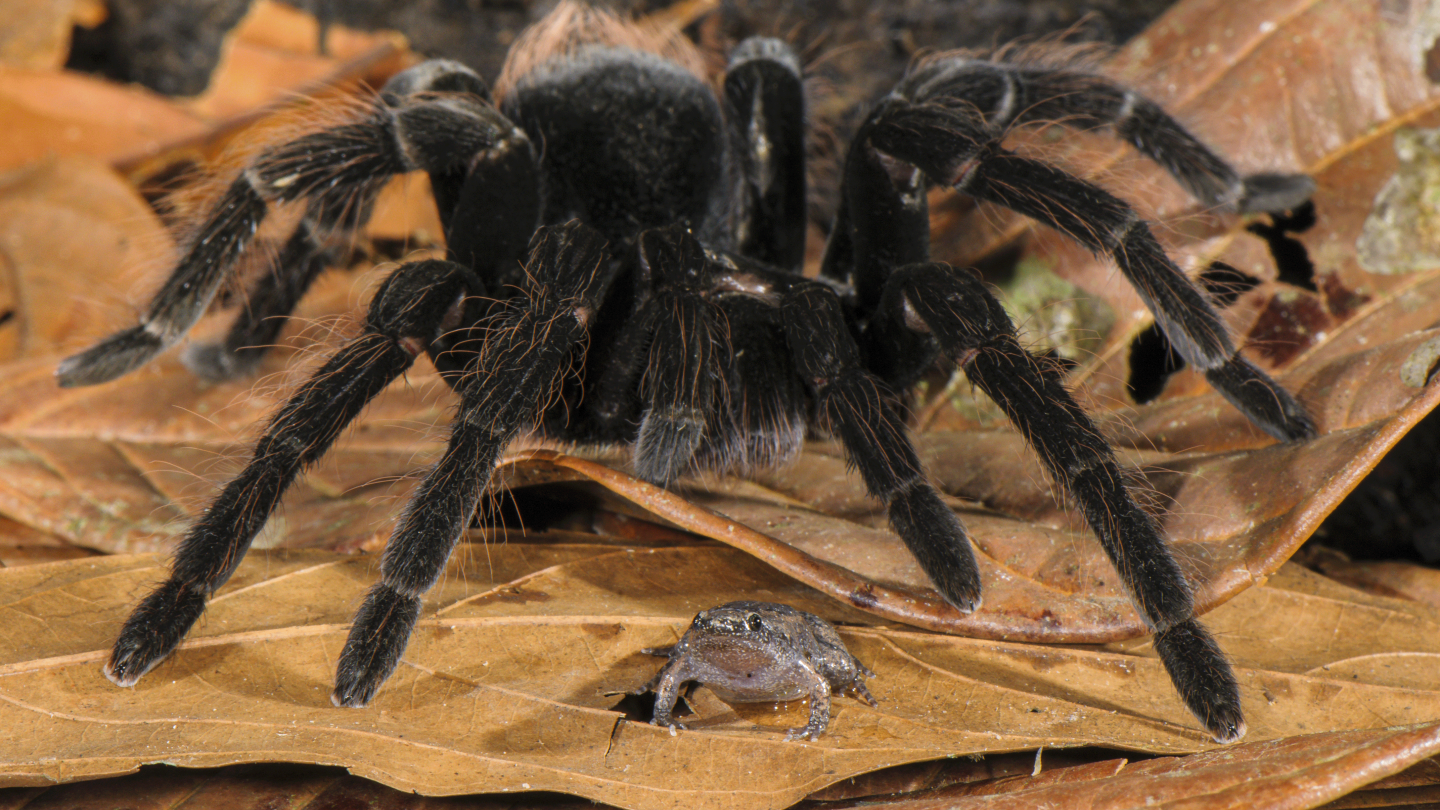
Tarantulas are hairy so that the army ants cleaning their homes don't eat them alive, a new study suggests.
The study, published Aug. 6 in the Journal of Natural History, proposes several new ideas about tarantula relationships with other species, including their surprisingly passive but still occasionally violent interactions with predatory ants.
Predatory ants, or army ants, are known to hunt spiders alive, but when these ants were observed scavenging for food in South American tarantula burrows, the ants tended to ignore adult tarantulas as well as tarantula offspring. In the rare instances when the ants did attack, the tarantulas' stiff hairs offered adequate protection.
"The dense hair covering the tarantula's body makes it difficult for the ants to bite or sting the spider," study lead author Alireza Zamani, an arachnologist at the University of Turku in Finland, said in a statement. "Therefore, we believe that the hairiness may have evolved as a defence mechanism."
Related: Deadly male funnel-web spider 'Hercules' breaks record as biggest ever discovered
Zamani and his colleagues explored the complex relationships between tarantulas and other animals by reviewing previous scientific studies and gathering new observations from the field and social media.
The researchers found that army ants help fossorial tarantulas — those that live in burrows — by removing old food from their burrows. However, the spiders still needed protection in case the ants got bitey. This hair-defense hypothesis is supported by previous studies that suggested burrowing tarantulas cover their egg sacs in hairs to help stop ants from getting at them.

Furthermore, the team discovered that less hairy — and therefore potentially more vulnerable — arboreal tarantulas, including Avicularia hirschii in Peru, have developed different defense strategies against ants. For example, in one observation, the researchers watched A. hirschii hang from the tip of a leaf to escape ants on the hunt for prey, according to the statement.
While tarantula-ant relationships can get strained, the researchers found that tarantulas enjoy friendlier interactions with amphibians, which sometimes live in their burrows. The study described more than 60 partnerships between tarantulas and amphibians across 10 different countries, as well as relationships with snakes and other spiders.
"Apparently, the frogs and toads that live within the retreats of tarantulas benefit from the shelter and protection against their predators," Zamani said. "In turn, they feed on insects that could be harmful to the spider, its eggs, and its juveniles. It seems that tarantulas might not be as scary and threatening as their reputation suggests."







